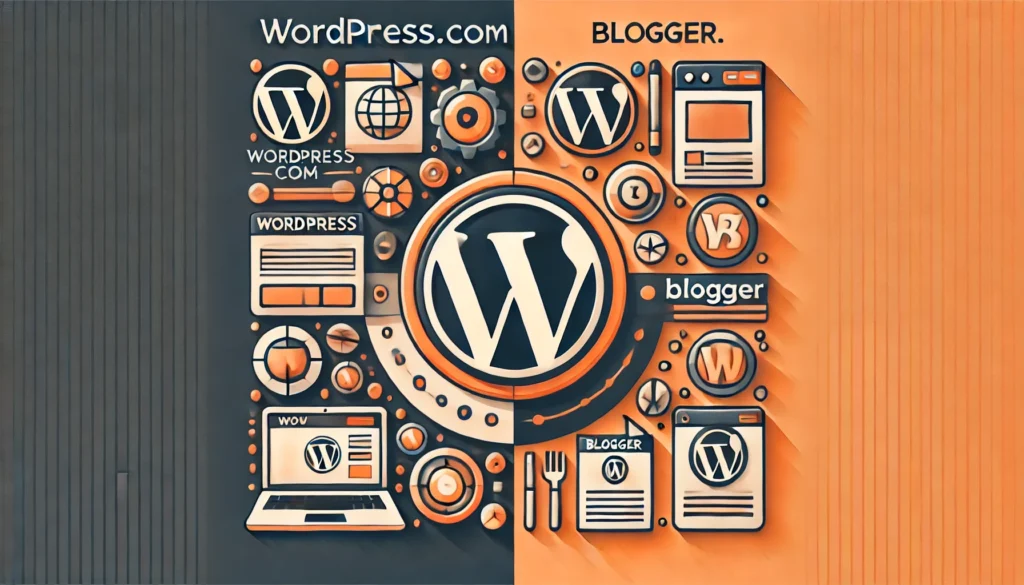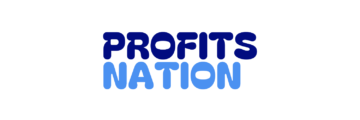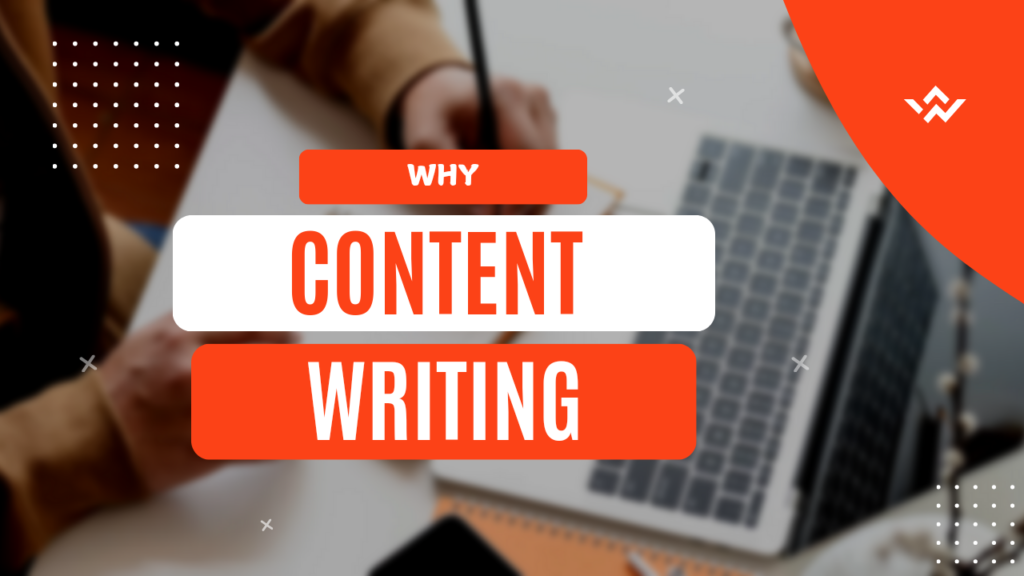Start a Blog for Free
magine the excitement and endless possibilities that come with launching a blog—for free—in 2024! Whether it’s sharing your passion, building an online presence, or creating new income streams, starting a blog gives you a unique platform to shape your voice and impact.
This guide will walk you through every step, from selecting the perfect free platform to building, growing, and even monetizing your blog.
And because no journey is without its bumps, I’ll share insights on overcoming common challenges, so you can confidently transform your ideas into a thriving blog.
What Are the Best Free Blogging Platforms in 2024?
Some of the best free blogging platforms in 2024 include WordPress.com, Blogger, Medium, Wix, and Weebly. Each has its pros and cons, but all offer free plans that allow you to start a blog without upfront costs.
Can You Really Make Money from a Free Blog?
Yes, you can make money from a free blog through methods like affiliate marketing, sponsored posts, and displaying ads. However, free platforms often have limitations, so if you’re serious about monetization, you might eventually want to upgrade to a paid platform
What’s the Difference Between WordPress.com and WordPress.org?
WordPress.com is a free, hosted platform that includes WordPress branding, while WordPress.org is a self-hosted option that gives you full control over your blog. With WordPress.org, you need to purchase your own hosting and domain, but you get more customization options.
How Can I Drive Traffic to My Free Blog?
You can drive traffic to your blog through SEO, social media promotion, email marketing, and guest posting on other blogs. The key is to create high-quality content and promote it consistently.
How Long Does It Take to Monetize a Free Blog?
It can take anywhere from a few months to a year or more to monetize a free blog, depending on how much time you invest in creating content, promoting your blog, and building an audience.
Dive into the world of free blogging and unlock your potential as a content creator.
if you still start from low pricing plan; HOW TO START A BLOG
The Basics of Starting a Blog for Free
Have you ever wanted to start your own blog but hesitated due to the costs involved?
Good news is, in 2024, you can create a professional blog free of cost!
Whether you want to share your ideas, increase your view counts, or perhaps generate some money, there could not be a better moment to begin blogging free out of pocket, and the following guide will walk you through the entire processes and select the best platforms available to be optimized for search engines before eventually being monetized so that long term success could be assured about your blogging journey.
Now, are you ready to make your blogging dreams a reality? Let’s get started! Start a Blog (step by step)
Why Blog for Free in 2024?
By 2024, blogging will remain one of the best ways to share your thoughts, build your personal brand, and generate income. The best thing? You don’t have to spend a single penny to start.
Free blogging platforms have really made it easy for anyone to start, without considering experience levels or technical abilities.
You can begin a free blog, test the waters, experiment with content, and gradually build an audience. Whether you are passionate about travel, cooking, tech, or any other niche, blogging gives you a platform to share your thoughts and expertise with the world.
Advantages of starting a blog for free:
- Low-risk entry: You can start without worrying about initial costs for hosting or domains.
- Learn and experiment: You’re free to explore blogging on absolutely free platforms with no financial commitment.
- The possibility of monetization: You are always able to earn even on free platforms. You could be doing it through affiliate marketing or sponsoring of posts.
Advantages of Free Blogging Platforms
All these free blogging sites, like WordPress.com,Blogger, and so on, provide maximum features that one might need to get started.
Although they do not provide all the functions and customizations as in paid services, they already provide everything that one might need to start with a blog or post the content.
Benefits include:
- Easy to set up: Most free web hosts come with guided setting procedures so you do not necessarily need technical know-how to get it started.
- Pre-designed themes: You can make your blog look professional from day one using a variety of free themes.
- Hosting included: Free platforms host your blog for you so you don’t have to pay extra for hosting services.
- Community support: The majority of free platforms have large communities of users who might be able to help you solve your problems and even give you some advice.
Selecting the Appropriate Blogging Platform
The decision of where exactly to publish your blog comes down to a lot. There are many options available; however, in each of them come different pros and cons. Let’s take a glance now at two of the most common ones: WordPress.com and Blogger.
WordPress.com vs. Blogger: What’s the Difference?
WordPress.com is one of the world’s most popular blogging platforms. It’s very user-friendly, highly customizable, and offers much. The free version comes with some basic themes, minimal storage space, and a WordPress.com domain like yourblog.wordpress.com. That makes it a great alternative for bloggers who want to put in effort to create top quality content and grow audience overtime.

Another great free blogging website is Blogger, owned by Google. Extremely simple and easy to use, you can easily add Google Analytics and AdSense integration in a snap. There’s not much in terms of customization options as compared with WordPress.com, but that’s also perfect for beginners.
WordPress.com vs. Blogger
- Customization: Blogger has fewer customizations than WordPress.com but is great for beginners due to its easy navigation and usage.
- SEO: Both are SEO-friendly, though WordPress.com will give you more control over your SEO settings.
- Monetization: Blogger allows easy integration with AdSense, while in WordPress.com, you have to get the paid version to fully monetize options.
Other Free Blogging Sites for You to Try Out
Besides WordPress.com and Blogger, there are other free sites you may need depending on the goal of your blog site:
- Wix: You might have heard of Wix drag-and-drop website builder. The Wix website gives out free plan features with a Wix domain.
- Weebly: It is another drag-and-drop service, fairly good for small blogs.
- Medium: The best option for content-oriented writers who are less interested in designing or by making some money.
Free Blog Setup Steps on WordPress.com
WordPress.com is probably one of the top blogging platforms without spending a single penny from your pocket. Follow simple step-by-step process listed below and get started for your blog in just some easy steps:
Getting Started with Your Free WordPress Blog: A Step-by-Step Guide
- Sign up. Go to WordPress.com and click “Start Your Blog.” You’ll need to sign up for a free account using your email address.
- Blog Name. Pick a blog name and URL. Free accounts use the WordPress.com subdomain, so your blog may end up at yourblog.wordpress.com.
- Choose a Theme. WordPress provides free themes for you to use. Select a design that best reflects your blog’s personality.
- Set Up Your Blog: Add Pages, Navigation Menus, and Configure Widgets.
- Write Your First Post: Now you can start creating content on your blog by writing your first blog post.
- Customizing Your Free Blog: Themes, Widgets, and More.
You can have a completely professional-looking website even in the free version of WordPress.
Here is how you can customize your blog:
- You will have many more free themes from WordPress, and you can select what suits your business style and industry.
- You will be able to add functionality to your blog by having widgets like a search bar, recent posts, or social media buttons.
- Manage your blog’s structure in a way that you can be able to create menus and so, have a smooth user interface.
- Insert an image, or an illustration showing the look of a default WordPress.com dashboard setup set up for a beginner introduction.
Blogger is one of the free, really easy-to-use blogging services. Here is how you can get started:
Creating Your Blogger Blog Step by Step
- Create Your Google Account: You’ll need to have a Google account to use Blogger; if you don’t, create one now.
- Access to Blogger.com: Click the “Create Your Blog” link and sign in using your Google account.
- Your Blog Setup: Title and assign a URL to your blog. Just like with WordPress, Blogger utilizes subdomains: yourblog.blogspot.com.
- Template: Choose from among a few very simple templates. You want a template that works well with your blog’s theme.
- Once you’ve set up your blog, you are ready to go to start writing and publishing posts right away.
- Customizing Your Blogger Site for a Personalized Look.
- Blogger offers some basic customization options to personalize your blog:
- Change the Layout: You can change your blog’s layout by adding gadgets, such as labels, blog archives, or your profile.
- Custom HTML/CSS: If you are knowledgeable in coding, you can directly modify the HTML and/or CSS to give your blog a look-and-feel that you desire.
Content Creation
This is where your blog will really start coming alive. Quality content is what is going to attract readers to your blog and keep coming back for more.
How to Choose a Blog Posts That Attract Readers
Topics attract readers; therefore, the right topics are key. Here are a few tips that can guide you in finding your niche:
- Identify one area of interest that would be travel, tech, food, or personal finance. This would build your authority in that niche.
- Use keyword research: You could use Google Keyword Planner, Ubersuggest, or Answer the Public to find topics that people are searching for.
- Research competition: Look out for popular blogs in your niche and see what is currently of interest.
Writing Tips for Compelling Blog Posts
Now that you have selected your topic, you must now write for the crowd. Here are some writing tips which will ensure that you write compelling blog posts which readers want to read:
- Create attractive headlines: A headline is what people read first, so make it attractive.
- Use short paragraphs: Write your text in short, manageable paragraphs.
- Use images and media: Images, infographics, or videos will enliven your blog post.
- End with a call-to-action: You want the reader to leave comments or share your post on his social media platforms, even subscribe to your newsletter if possible.
- You will also have an example image of the structure of a blog post, which will give you an idea of how to style a blog post using headlines, subheads, and images.
Optimization of Free Blog for SEO
The best method to optimize free blogs is through Search Engine Optimization. SEO sends a huge amount of traffic towards the blog. Optimization of content on your free blog in search engines, especially Google, will boost the visibility of the blog and more readers will visit it.
What Is SEO and Why Is It Important for Blogging?
SEO is the fine-tuning of your blog content, structure, and performance so that it ranks better with the search engines. With the higher ranking, a larger audience will find and be attracted to your blog more easily.
Sharing Your Free Blog
It’s one thing to have great content, and another thing to promote a blog to the masses. Here’s how you spread the word:
Social Media Strategies for Blogging Traffic Growth
Social media are the most powerful as well as free promotion tools for your blog. While using other networks like Instagram, Facebook, Twitter, LinkedIn, and Pinterest more audiences can be targeted beside traffic to a blog. Here are some ways of leveraging social media:
- Share all your blog posts on all social media and get in touch with your readers.
- Share blog posts: Write a new one and share it on your social networking websites with an attractive title and using relevant hashtags. You could use #bloggerlife, #bloggingtips, or even #bloggingcommunity in Instagram to reach a wider readership.
How to Grow Blog Traffic through Social Media
Interact with the audience: Do answer their comments, start a discussion, and know more about your followers. Activeness on social networks is of great help in generating something like a community for your blog.
Use visuals: Pinterest and Instagram are super visual. You can put up some attractive images or infographics from your blog or even just a really nice quote. You just link back to your blog.
Join blogging groups: Most social media platforms have groups or communities for bloggers. Join them, so you can share your posts, participate in collaborations with other bloggers, and you can get tips from veterans.
Build Your Free Email List
Through these free blogging platforms, you can even use email marketing as a mighty tool. Here is how you can build an email list absolutely for free:
- Offer Free Content Upgrades: Offer them a reason to subscribe to your newsletter by providing some free downloadable content to your reader such as e-book, checklist, or guide.
- Free email marketing. For instance, Mailchimp or MailerLite will collect and deliver e-mails to a few subscribers for free. That’s absolutely great for new bloggers.
- Put a sign-up form on your blog. Most of the blogging websites allow adding an email signup form or popup. Add these to the most catching positions of your blog, either at the sidebar, bottom footer, or at the end of the blog post.
Monetization on Your Free Blog
Although free blogging is a wonderful opportunity to build an audience, the next desire after building the audience is always to monetize your blog. Although free blogging sites come with many limitations, you can still earn money on them.
Making Money off a Free Blog with Affiliate Marketing
The best way to cash in on a free blog is through affiliate marketing. Here, you use special affiliate links and get other people to promote products or services. For every single sale made after clicking that affiliate link, you’ll receive a commission.
Now, let’s get started with using your free blog for affiliate marketing:
Join affiliate programs. Many firms offer affiliate programs, among which are Amazon Associates, ShareASale, and CJ Affiliate. All you have to do is join and start.
Write product reviews or how-to tutorials: One excellent way of putting affiliate links organically is through the writing of product reviews or how-to guides. Let’s assume you have a tech blog; you might write about a new smartphone and place affiliate links where a reader could purchase it.
Make your affiliate links transparent: Most blogging sites, especially WordPress.com and Blogger, require or expect you to post a notice when you are using affiliate links. So, you need to include a disclaimer for readers so they understand you may make a commission from there.
On this site, you can enable Google AdSense to serve advertisements on your blog to monetize when people click them. Usage restrictions may be placed using it on the free option of WordPress.com but no for Blogger which does support enabling AdSense even during signing up.
Now to how to earn money via Google AdSense:
You will sign up with Google AdSense: It is easy to sign into AdSense with your Google account if you signed up with Blogger and will link it to your site.
You add adverts on your blog. Here is where you can place adverts in any section of the blog after it has been approved, be it sidebar, inside your posts, or top in the header.
Google AdSense can monitor its performance and income in displaying ads. The more traffics your blog is attracting the more you are likely going to earn.
Monetizing and Gaining Traction of Blog
Once you establish and get your blog started on the web, it will be very important to remain consistent in posting frequency, and keep growing the list of readers. The larger you are looking to monetize or keep this blog on long term, the greater importance this will carry forward.
How to Be Consistent with Your Blogging
The key for bloggers is consistency. Here is how you can achieve it:
- You are building content calendars. Think through and post your blog entry schedule; this keeps everything in place and ensures posts will actually be published periodically.
- Set achievable goals for your site. Do not overwhelm yourself by trying to post once a day or so on. You start by setting an achievable schedule-you could schedule once a week, but twice a month could be a good enough number too.
- Batch your content: If you are busy, try batching your content. For example, write a number of blog posts on one day and schedule them to post at different times.
Why Regular Updates and Fresh Content Matter
Google and other search engines love fresh content. Regular updates to your blog not only keep your readers interested but also improve your SEO. Here’s why updating your blog is important:
- It will help improve your ranking in the search engines, as it would indicate them that your blog is up-to-date and relevant.
- It will give your readers a reason to keep checking back for something new from you.
- Develops authority: You’d be regularly producing high-quality stuff, establishing you as the authority on that particular subject.
Common Mistakes to Avoid When Starting a Free Blog
Blogging can get pretty learning, but saves us from mistakes that many new comers usually commit. Here are the pitfalls to watch for.
Why some blogs fail and how to avoid it
Lack of Focus
- A blog fails to define its niche as it fails to gain any specific kind of audience. Be it passion or kind that stirs the readers in whatever you choose to put forth.
- Irregular posting: Posting irregularly can make readers disinterested. A schedule is very much in order, however thin, say once a week.
- Lack of promotion: Just publishing a post isn’t enough. Use social media, SEO, and email marketing to get the word out to more people.
Pitfalls of Free Blogging Platforms and How to Overcome Them
- Limited features: Free services normally have some restraining factors, like limiting either your possibilities of customization or monetization options. If your blog really catches on, you might want to upgrade to a paid account for more features.
- Advertisements on your blog: A few free services, such as WordPress.com, will place ads on your blog. You have no say over these ads, but the effect is diminished through intense emphasis on quality content.
How to Upgrade from a Free Blog to a Paid Blog
Somewhere down the line, when your blog has expanded, you will want to upgrade over to a paid platform for more flexibility and customization, as well as monetization options.
When to Switch to a Paid Plan?
But once your blog is gaining ground, and you want more control over the design, functionality, and monetization of the blog, then it is probably time to switch over to a paid plan. Some signs it is probably the time to upgrade would be when you desire a specific domain: With the paid plan, you can purchase your own own custom domain name; for example, yourblog.com, which makes it all look pretty professional.
You pay for: There is a ridiculous amount of paid advanced platforms which let you customize nearly everything to its finest; they will even give you better themes than the one you would choose from their free variants.
You have this burning desire to make money out of the blog. Now, if the whole motive behind you creating that blog was the actual earning of some cash then you can make it possible with self-hosted versions by offering the affiliate marketing, ad networks, and sales of your product.
It empowers the owner with its full control over the website. And here are just a few reasons why bloggers eventually go to a self-hosted blog:
You’re not bound by the free service rules: with a self-hosted blog, you own your content.
More personalization: You can install themes, plugins, and custom code to make your blog look and function just the way you want it to.
More potential to earn: Self-hosted blogs allow you to run more types of ads, affiliate programs, and even sell products or services directly.
Summary
Blogging for free in 2024 is easier than ever. With platforms like WordPress.com and Blogger, you can launch a blog with zero upfront costs, create high-quality content, promote it through social media, and even start earning money through methods like affiliate marketing and AdSense.
As your blog grows, you’ll have the opportunity to pay more for a platform offering lots of features and more features for customization. Stick to your audience but do not forget to learn as well as adapt along with your blog as it keeps growing and if you have an intention of growing it independent How to start a blog-check.





Pingback: 12 Easy Steps to Start Blogging and Grow Fast -